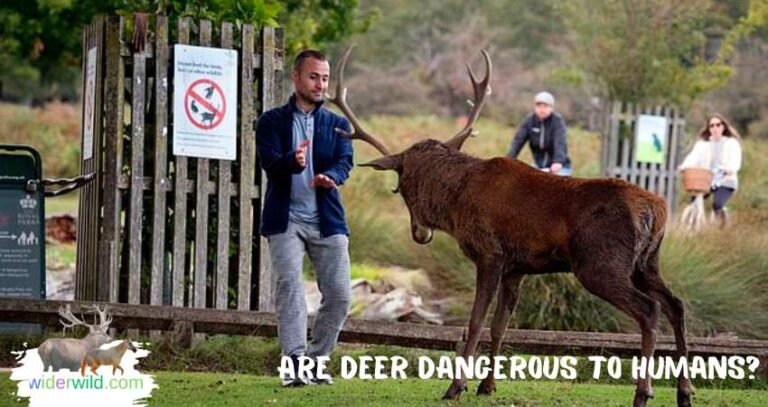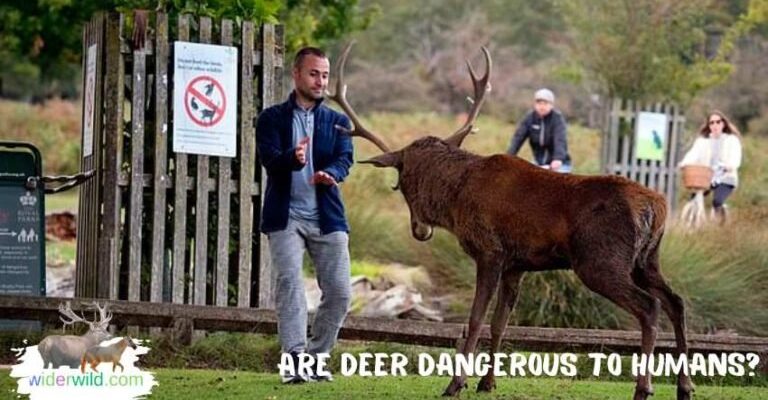
You might be wondering how something as seemingly peaceful as a deer can become dangerous. Let’s dive into the various scenarios where encounters with deer can lead to unexpected outcomes. By understanding these situations, you can navigate your interactions with these wild animals more wisely.
Understanding Deer Behavior
Deer are generally shy and non-aggressive animals. They prefer to avoid confrontation whenever possible. Think of them as the introverts of the animal world; they’d much rather blend into the background than engage with you. However, their response to perceived threats can lead to dangerous situations. When a deer feels cornered or threatened, it may act out of instinct. This is often when a deer can become dangerous.
A common scenario is during the mating season, also known as the rut. During this time, bucks (male deer) are on high alert and more aggressive. They might fight other males for territory or mates, and they may not be as cautious around humans. If you happen to cross paths with a buck protecting its territory, it might charge at you, which can definitely cause injury.
Additionally, does (female deer) are fiercely protective of their fawns. If you come too close to a mother and her young, she might perceive you as a threat. It’s a reminder that even the most innocent-looking animals have protective instincts, just like any parent would.
Deer and Vehicle Collisions
One of the biggest dangers deer pose to humans is through vehicle collisions. Every year, thousands of accidents occur because of deer crossing roads unexpectedly. Imagine driving down a quiet road when suddenly, a deer leaps in front of your car. It’s the heart-stopping moment that can lead to serious accidents, not just for the deer but for you too.
The risk of deer-vehicle collisions is particularly high during dawn and dusk when deer are most active. Their coloring can make them hard to spot in low light, adding to the danger. According to various reports, the peak times for these unfortunate encounters are during the fall mating season, when deer are more likely to wander into roadways.
To reduce your risk, it’s crucial to stay vigilant in areas known for deer activity. Look for signs indicating deer crossings and slow down, especially during those peak hours. Remember, it’s not just about avoiding a collision but also ensuring your safety and the well-being of these animals.
Health Risks: Deer and Disease
Now, you might be surprised to know that deer can be carriers of certain diseases that could impact humans. The most notable among these is Lyme disease, which is transmitted by ticks that often inhabit deer. If you’re out hiking or spending time in nature where deer roam, it’s essential to take precautions against ticks.
Lyme disease can lead to serious health issues if not caught early. Symptoms may include fatigue, fever, and a distinctive rash, often resembling a “bull’s-eye.” It’s a good idea to wear long sleeves and protective clothing if you’re in areas where deer are prevalent, plus do regular tick checks after being outdoors.
Another concern is Chronic Wasting Disease (CWD), which affects deer populations. While there’s currently no evidence that CWD can be transmitted to humans, it’s a reminder to be cautious about deer handling and hunting practices. Always follow local guidelines and regulations regarding deer health.
Urban Deer Encounters
As urban areas expand, deer are increasingly found in suburban and urban settings. It’s not uncommon to see them roaming around residential neighborhoods, looking for food. While a deer grazing in your backyard might seem charming, these encounters can become problematic.
Urban deer often lose their natural fear of humans, leading to bolder behavior. They might rummage through gardens or even cause property damage. Plus, this close proximity can lead to more frequent vehicle collisions as they attempt to navigate streets and sidewalks.
To mitigate these issues, it’s essential to manage your garden and outdoor spaces. Use deer-resistant plants and avoid leaving out food scraps, which might attract them. Educating your community about safe practices when living near deer can also make a big difference.
When to Contact Wildlife Authorities
If you ever find yourself in a situation where a deer seems aggressive or ends up in a precarious position, it’s crucial to know when to get help. Wildlife authorities or local animal control can guide you in these scenarios. For example, if you spot a deer that appears injured or trapped, reaching out for assistance is the responsible action.
Another situation might arise during hunting season, where deer populations need to be managed to maintain a healthy ecosystem. Knowing local laws and regulations regarding hunting is vital. Responsible hunting practices can help ensure deer populations remain stable and reduce dangerous encounters.
To sum up, while deer are generally peaceful creatures, there are situations where they can be dangerous to humans. Understanding their behavior, being cautious on the roads, and taking health risks seriously can help you navigate living in harmony with these beautiful animals. Let’s respect their space while keeping our own safety a priority.
In conclusion, while deer are beautiful and often harmless, they can pose dangers to humans under certain circumstances. By understanding their behavior, being aware of peak activity times, and taking precautions against diseases, we can respect their place in nature while protecting ourselves.
As we continue to share spaces with these creatures, let’s strive to coexist in a way that values both our safety and their well-being. Whether enjoying a peaceful walk in the woods or driving through deer-populated areas, keeping these points in mind will help you navigate interactions with deer safely. It’s a balance of appreciation and caution that leads to a harmonious relationship with the natural world around us.

